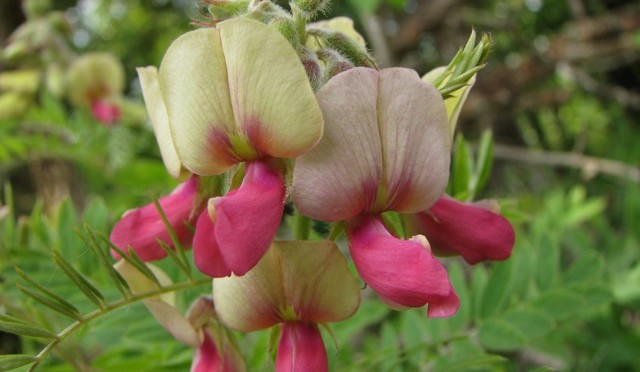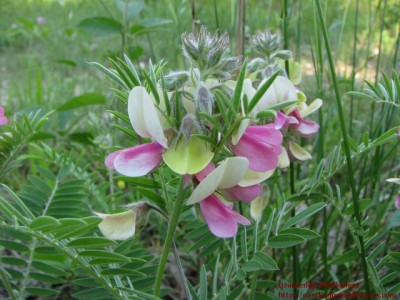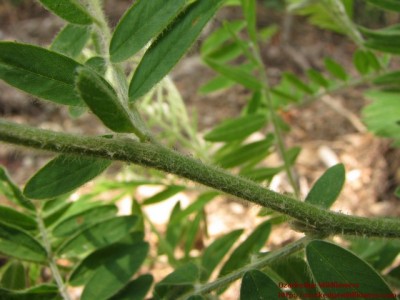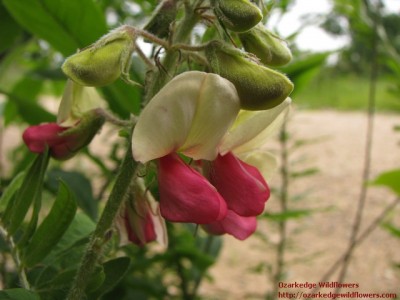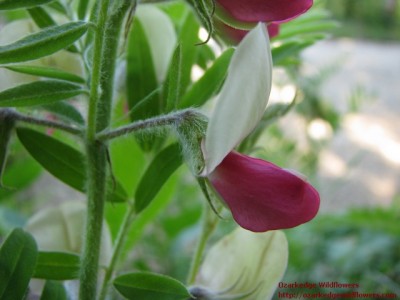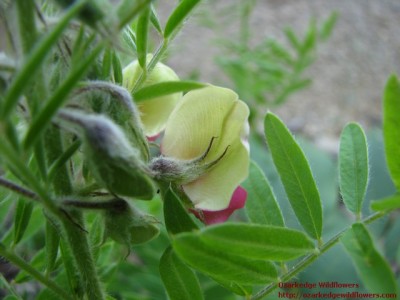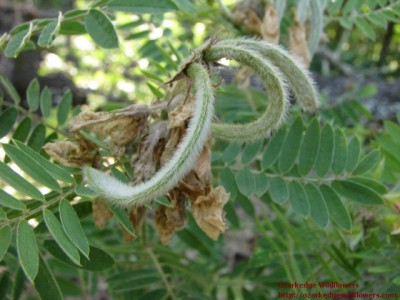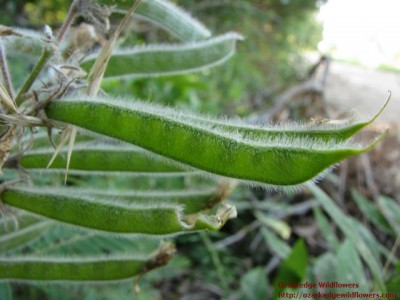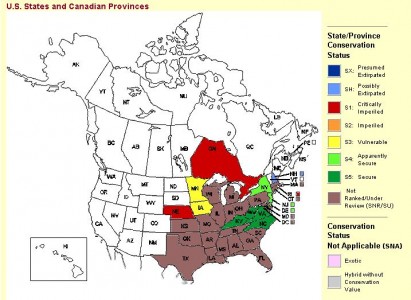This is one of the most unusual flowers on Ozarkedge. The color combination of Pink, White and Yellow reminds me of dyed Easter eggs. There’s nothing else like it! This plant isn’t just unusual, it’s important. It has a large root system that fixates nitrogen in the soil. The roots also contain rotenone, which was once used as an organic insecticide (it’s no longer approved for organic use due to toxicity and a link to Parkinson’s Disease-see one NIH funded study here). The most common use of rotenone today is to kill invasive species of fish.
Latin Name/Common Name- The genus name- Tephrosia is derived from the Latin word tephros meaning ashen or hoary. This is a reference to the silvery, ashy color of this plant and its grayish pubescence. The common name- Goat’s rue is used for both Tephrosia virginiana and Galega officinalis. Both are members of the pea (fabaceae) family but are different plants. This is important to note because Galega officianis is sometimes recommended as an herbal remedy increase lactation. Tephrosia virginiana has an old reputation of increasing breast milk in goats, hence the common name, Goat’s rue. Roots of Tephrosia virginiana contain rotenone. This has been used as a fish poison and insecticide.
Bloom Color- Each flower is a combination of soft shades of pink, white and occasionally yellow.
Description- All parts of this plant are pubescent and give the plant a silky soft appearance and grayish cast to the foliage. The plant grows to a height between 1 and 2 feet and spread of about 1 foot. Leaves are alternate and compound with up to 25 leaflets. The multi-colored flowers appear in a cluster at the top of the plant with multiple flowers in bloom at once, surrounding the stem like a merry-go-round. The roots are very deep and one reason this lovely plant resists transplanting.
The bean-like seeds appear in June and ripen in July to August.
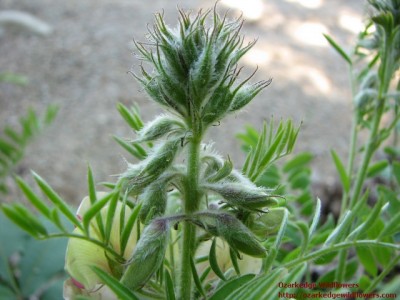 Buds at the top of the plant are softly pubescent
Buds at the top of the plant are softly pubescent
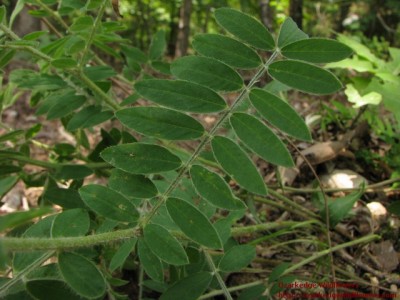 Complex leaves have greater pubescence on the underside
Complex leaves have greater pubescence on the underside
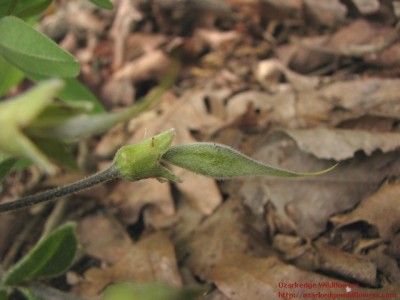 Young seed pod soon after flowering
Young seed pod soon after flowering
Bloom Time- On Ozarkedge, Goat’s rue is typically in bloom throughout the month of May.
Habitat- Tephrosia virginiana can be found in a variety of habitats, including woodlands, rocky savanas or glades as well as prairie habitat.
 Goat’s rue growing at Baker Praire in Harrison, AR
Goat’s rue growing at Baker Praire in Harrison, AR
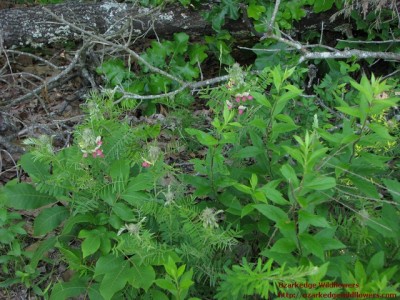 Goat’s rue in a woodland edge surrounded by oak trees
Goat’s rue in a woodland edge surrounded by oak trees
What’s Growing Nearby?- Of course, this depends on the habitat where Tephrosia virginiana is growing. In the woodland habitat on Ozarkedge, neighbors include Baptisia bracteata, Asclepias variegata, and Manfreda virginica. In the prairie habitat, neighbors are Eryngium yuccifolium, Callirhoe digitata, Salvia azurea, Liatris pycnostachya and other native plants of the tallgrass prairie,
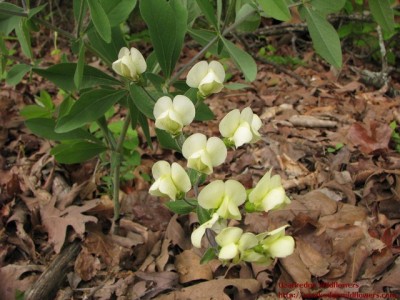 Baptisia bracteata (Cream wild indigo) in woodland by Goat’s rue
Baptisia bracteata (Cream wild indigo) in woodland by Goat’s rue
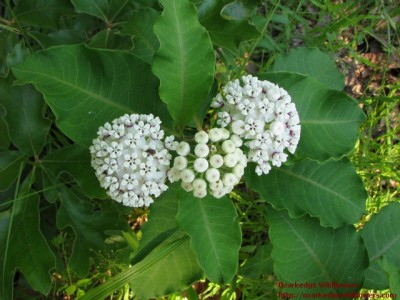
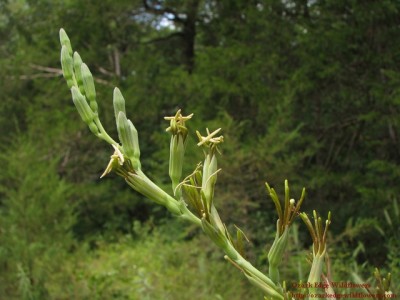 Asclepias variegata Manfreda virginica
Asclepias variegata Manfreda virginica
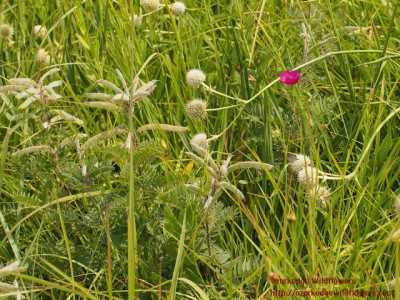 Tephrosia virginiana with Eryngium yuccifolium and Callirhoe digitata
Tephrosia virginiana with Eryngium yuccifolium and Callirhoe digitata
Endangered List- Tephrosia virginiana’s unique beauty might tempt one to pick her flowers or even poach a plant for a personal garden. Please don’t do it. Almost every reference I found states that Goat’s Rue rarely survives transplanting. If you want to grow this lovely plant, there are reputable seed sources online such as Prairie Moon Nursery. There you can purchase seed and a species specific inoculum that will aid in germination.
Being so picky about her habitat and so tempting to pick has caused Tephrosia viriniana to become a rare plant. The USDA Plants Database lists it as Endangered in New Hampshire and of Special Concern ins Rhode Island. You can access the most recent information here.
NatureServe lists it as Possibly Extirpated in New Hampshire and Critically Imperiled in Ontario, Nebraska and Rhode Island. It is listed as Vulnerable in Minnesota and Iowa. It is Apparently Secure in New Jersey. In New York it is right between Apparently Secure and Secure. It is Secure in North Carolina, Virginia and West Virginia. For all other states it is listed as SNR- Not Ranked/Under Review.
Interesting Tidbits- Native Americans were known to use the roots as both a de-worming treatment and a purgative. It was used as an additive to bath water by Creek women to combat irregular menstrual cycles. They also drank an infusion from it for bladder problems and coughing. The Cherokee women washed their hair in it to prevent hair loss and drank a liquid with juice from the root to address weariness. The most common early use I read about was to use the rotenone from the roots to stun fish temporarily so they could be captured.
